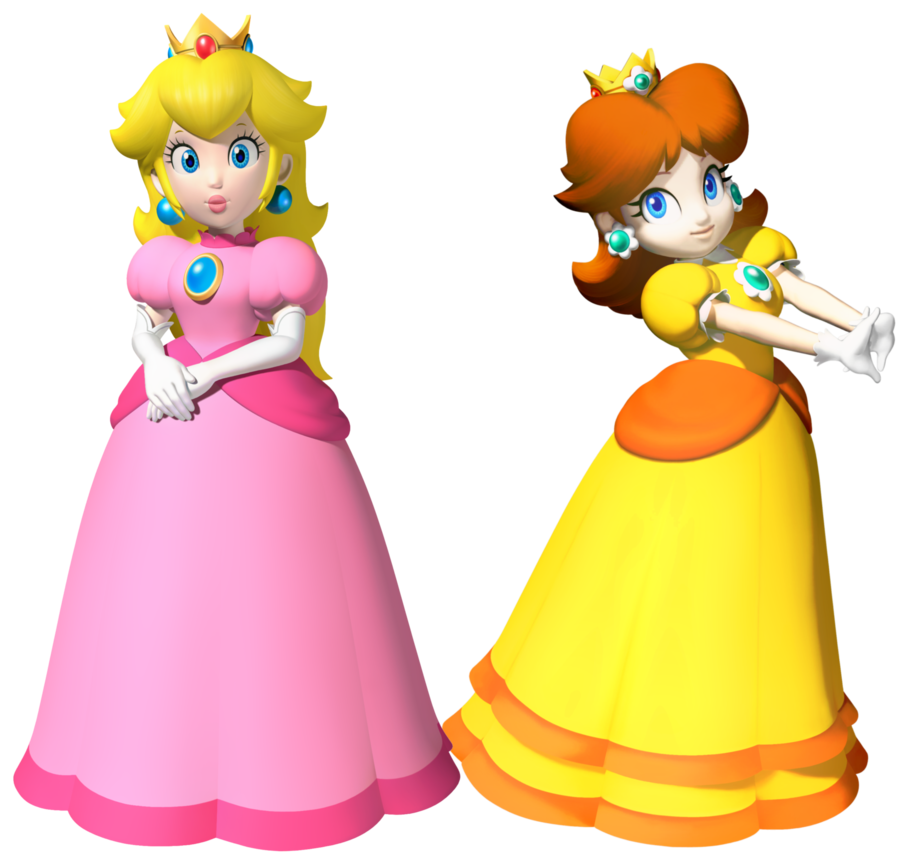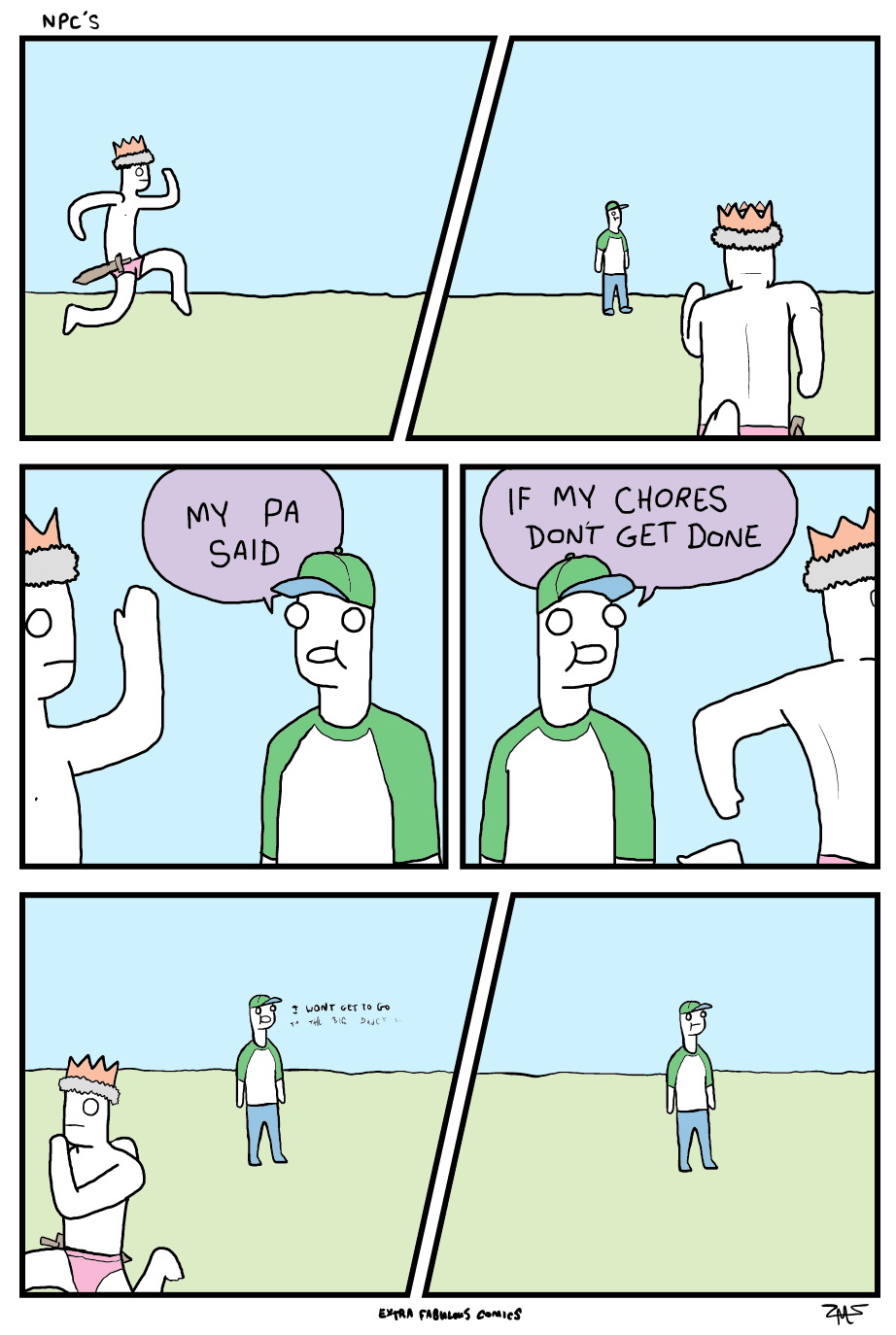“I Don’t Want to Talk to You” – Tips for Character Development for NPCs in Video Games
Our world is filled with people of all walks of life. Why should your virtual world be any different? The methods for character development listed below are excellent and empowering tools that can assist you in populating your world with truly compelling characters.

Gamers are all different, and the characters that resonate with your player will differ from person to person. This is why it’s important to fill your world with a variety of diverse characters, so that each player can have their favourites.
Try to make your characters as unique as possible: no two characters should be too alike (unless they are specifically designed to mirror one another for symbolic reasons). If you find that two of your NPCs are very similar, find what makes them different and strengthen that part of their character.
Let’s take the example of Princess Peach and Princess Daisy from the Mario Kingdom: do they have different characteristics? Have a quick think and see what ideas you can come up with that differentiate the two.

So what did you come up with? Princess Peach might be more experienced, respected, popular, stressed, powerful, conceited, or self-important, whereas Daisy could be jealous, resentful, carefree, down to earth, a tomboy, emotional, or tactless.
Symbolically, Peach is represented by pink and Daisy by orange. So despite their similarities, the two princesses do have some differences. If characters share a similar thematic space, it is important that you diversify them slightly to ensure that your game’s world is filled with a host of diverse characters.
Once you have a broad spectrum of personalities in your game, consider how they fit together. Characters don’t exist in a vacuum on their own – they live together and die together. Their history is only limited by your imagination.
This can vary from unrequited romances, bitter rivalries, familial ties, and so on and so forth. Star-crossed lovers, backstabbing brothers, and sworn enemies can all form a great backdrop for your narrative. Of course, not every character has to be related, but a passing reference now and then can help to form ties across your narrative, granting the player more insight into the workings of your world.
When designing a character, I keep in mind two things: purpose and personality. NPCs should serve one useful functionality and leave one main impression on the player.
The Happy Mask Salesman in Templars of Hyrule, for example, sells masks and is designed to make the player feel uncomfortable. His bipolar mood-swings make talking to him very uncomfortable, as one moment he’ll be quietly creepy and the next he’ll be yelling at the player.
This ‘purpose and personality’ criterion gives you a direction to work towards and prevents you from making too many superfluous characters that are not integral to quests and the central plotline. One such character that never made it into Templars of Hyrule was a young jaded bad-ass Kokiri girl in the Lost Woods – there are no other similar characters in the game, so this design brief explores unoccupied creative space, but since she served no purpose she ended up being cut from the game.

So you have a design brief for your character, but what if they feel too one-dimensional? The best way to add depth to your character is using a Character Pyramid. When developing a character, choose three conflicting traits that form the core of their personality. For example, let’s take some of Sonic the Hedgehog’s key traits:
- Freedom fighter, standing for all that is good
- Easy-going, living as he pleases
- Short-tempered and impatient
These contrasting and sometimes conflicting traits allow Sonic to be a more interesting character than if he were a “goody two-shoes” so to speak, a one-dimensional force of justice. Although he is a mostly benevolent character, Sonic still has some flaws. This is a good thing, since it gives his character depth and allows us to relate to him on a more human level. The same goes for villains! Of course antagonists should be antagonising, but that’s not to say they should be completely hell-bent on destruction and nothing else.
Cia from Hyrule Warriors is one such example of a not-so-villainous villain: although not evil herself, the powerful sorceress is possessed by an evil force which pushes her into the role of the game’s primary antagonist. A villain who takes great pleasure in inflicting pain and misery on others for no particular reason makes for a good impetus for finishing the game, but also renders the character flat and uninteresting. Your antagonist needn’t be likeable, but they should be at least remotely relatable.

In order to seamlessly tie your character into your game world in a believable and convincing way, think to yourself “What would I do if I were this character?” One example of this is the bickering sisters in Hylifax in Templars of Hyrule. When Rosy slides in an insult as she apologises to the customer for her sister’s appalling behaviour, Raelyn retorts “I can hear you, you know!” This “What would I do?” mentality sounds incredibly simplistic, but it’s surprising how informative it can be.

Similarly, the “Through Line of Action” aids you in gauging your character’s mood. Each character has a past, a present, and a future. When coming up with scripts, try to think of what the character just finished doing or what they are about to do next. When a character is not on-screen, they don’t simply disappear from the world’s timeline and cease to exist in your fictional world.
If they have just been running for their lives, they will naturally be out of breath. If they were up late the night before studying for a potions test, they might be tired the following day. If they have an appointment in 20 minutes, they’ll be in a hurry to leave. If the end of the world is forecasted for tomorrow, the character will be going through a whole whirlwind of emotions!
More solid examples of this include shopkeepers who have been rushed off their feet all day, or guards positioned in far-off outposts who haven’t seen another living soul for weeks. The past, present and future can help you decide on a character’s mood and can even sprinkle speech with foreshadowing statements of what the future will hold.

A word of warning: don’t insult the intelligence of your audience. There is no need to resort to oversimplified characters that rely on stereotypical markers in your games to convey certain aspects of their personality. A stock German character, for example, clad in Lederhosen and drinking beer from a stein, can very easily communicate the character’s background to the player – but does being German form just a part of your character’s identity, or their entire being? Calling a German character Hans or Heinz or Katharina or Franziska could do the very same job, while allowing you to show off more of their character through costume choices.
Of course, if your game is revolved around nationalities, it might rely on stereotypes to represent a great number of countries very quickly, but if your character is incidentally of any nationality, think twice before resorting to clichés, as it oversimplifies and dehumanises the character in question. This goes not only for nationality, but also gender, class, race, and so on and so forth.

Unfortunately, despite how well developed characters are, it is very rarely the case that the player will fully understand and engage with all of your NPCs. As enlightening as a five minute soliloquy from each character might be, the player will be whooshing around your world, busy with quests and monsters and all sorts of other distractions – they don’t want to stand around and wait while a story is forced down their throats.
So how can we reliably deliver unforgettable personalities to our audience? Well, when developing your characters, think about how their traits will manifest themselves in the game world. Use the “show, don’t tell” principle: an athlete might be running around a racetrack instead of boasting to the player about how fast he is.
Two characters that have been in a fight could be covered in bruises and donning a split lip. Think about how an enamoured character would look and act: love-induced sighs, an expression of drunken bliss, hearts for eyes, or even a bit of drooling. Which representation you choose really depends on the tone and style of your game, but remember that a picture is worth a thousand words, and more often than you’d like to think your NPCs will be granted nothing more than a fleeting glance from the player before they go gallivanting off on the rest of their adventures.

A great example of telling narrative through gameplay can be found in Papo & Yo, a game where you play inside the imagination of a child who is trying to cope with the reality of his alcoholic father. The father is represented as an enormous monster who can be enraged or pacified using certain items such as frogs and fruits.
The father’s alcoholism is shown through the monster’s insatiable appetite for frogs which the player must prevent the monster from reaching. This is a great use of metaphor to portray characteristics without a single word of dialogue, instead relying on gameplay to deliver the story.
Despite the monster’s apparent aggression and intimidating appearance, there are stages in the game where you must work with him to proceed to the next level, reinforcing how terribly interwoven the lives of the father and son are. The medium of video games has huge potential – allow the player to interact with the narrative instead of just passively receiving it, and your game is guaranteed to leave a lasting impression.
That concludes my post on character development. If you are considering having your characters voiced, don’t forget to check out my post on voice acting, How to extract a stellar voice acting performace from an average joe!